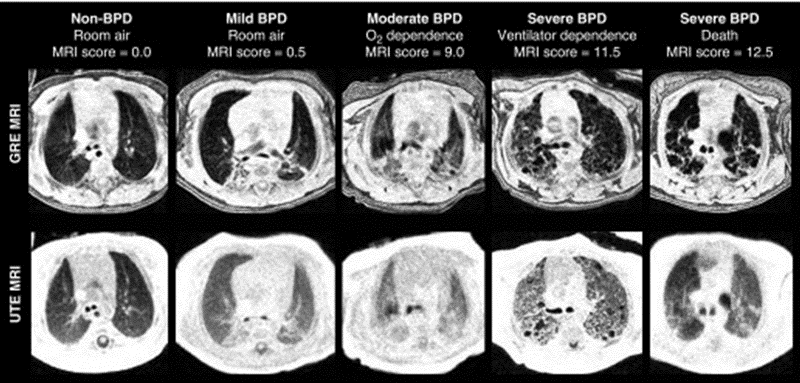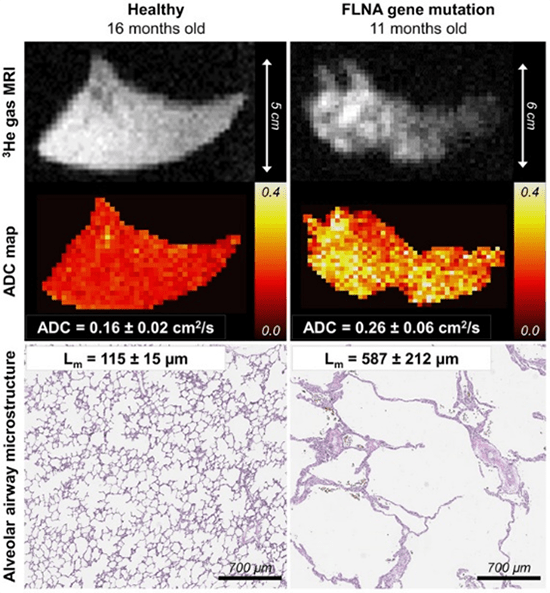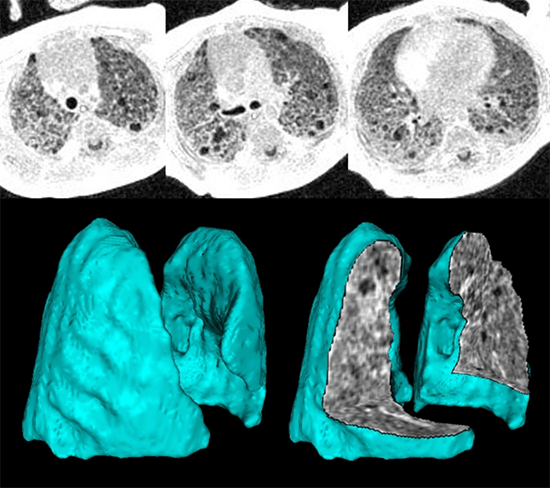Current Projects
Our mission is to focus on illustrating structural & functional cardio-respiratory abnormalities in perinatal patients. We do so by using novel, quantitative MRI techniques, with the objective of linking early-life MRI biomarkers of lung disease and subsequent disease trajectory in infants born preterm or with congenital abnormalities. Our goal is to improve our understanding and treatment of cardiorespiratory disease for young patients born prematurely or with congenital disorders.
Imaging of Regional Lung Ventilation in Infants
We aim to create novel imaging-based phenotyping of lung ventilation abnormalities in neonatal lung disease by employing pulmonary MRI with proton-density weighting and self-navigated gating, thus providing dynamic quantification of the 3D structure during free-breathing. Neonatal diseases of interest include bronchopulmonary dysplasia (BPD, otherwise known as chronic lung disease of prematurity) and pulmonary hypoplasia (underdeveloped lung tissue, frequently seen in congenital disorders such as congenital diaphragmatic hernia, CDH). The underlying lung abnormalities, their relationship to outcomes, and response to clinical care management is often poorly understood in patients with these conditions.






